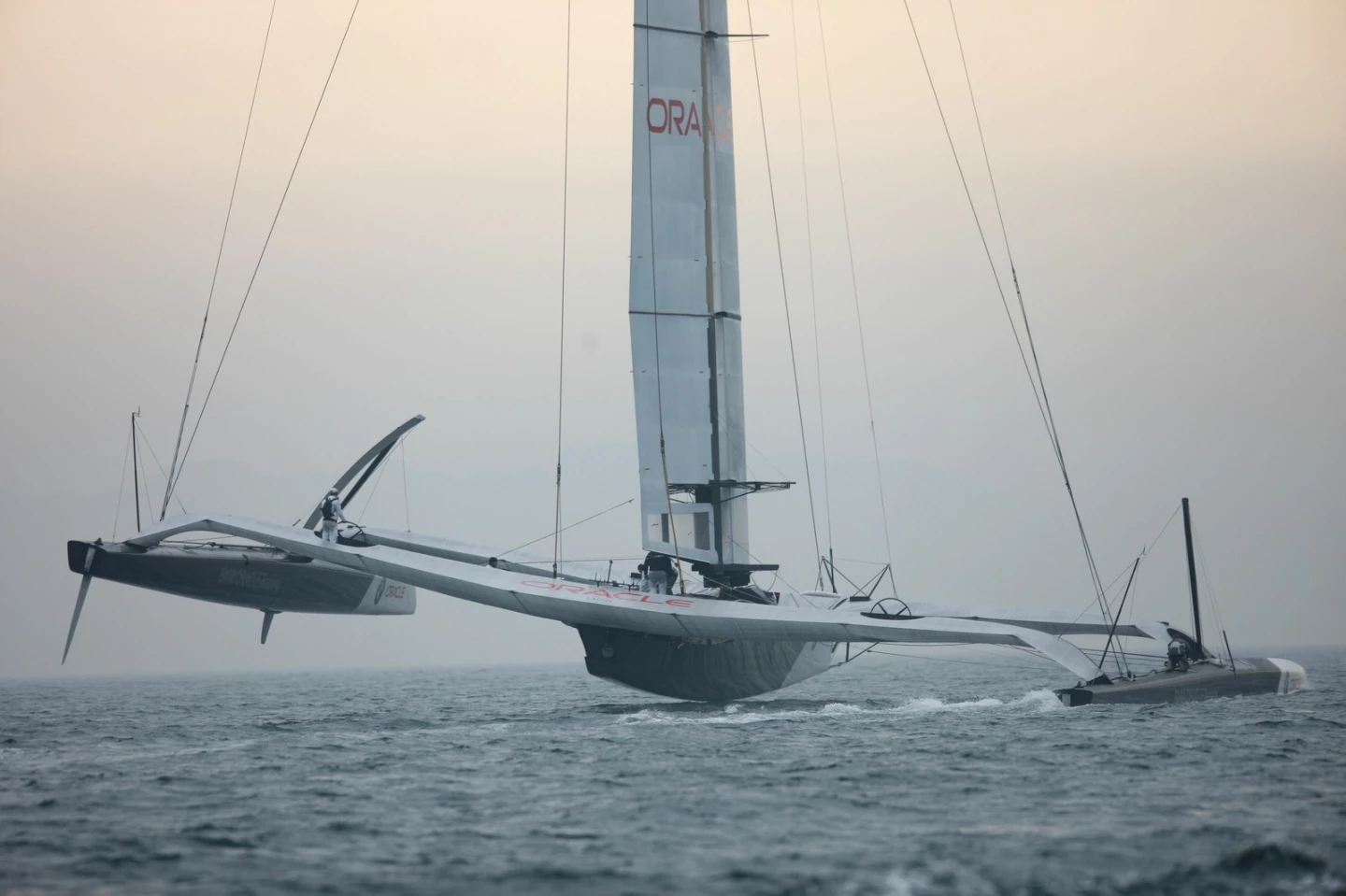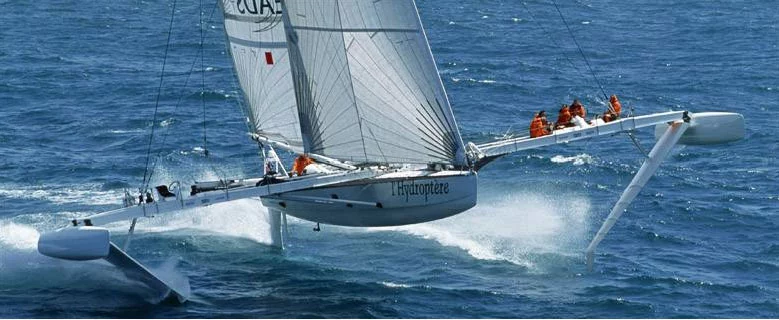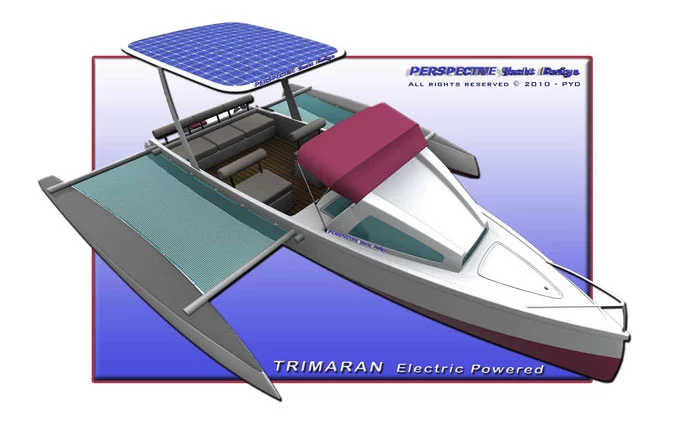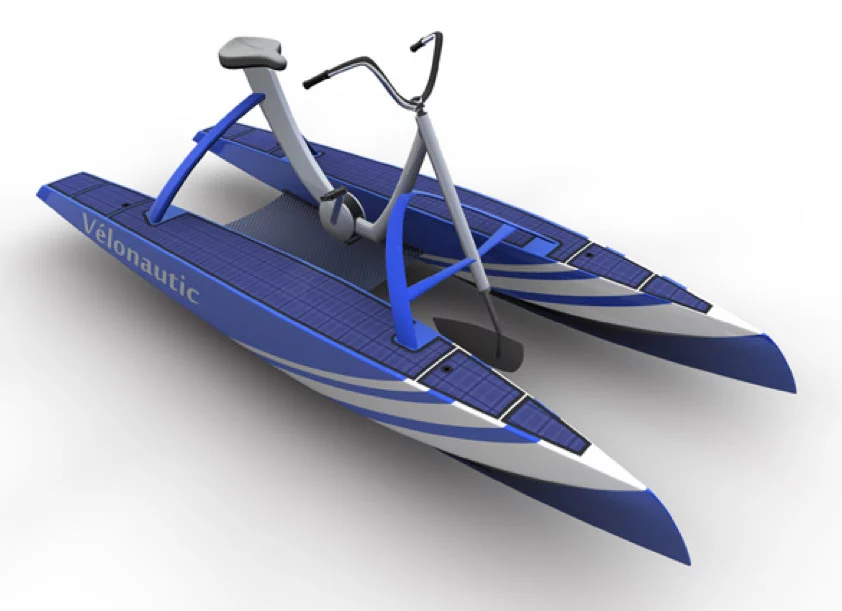The French-designed Platypus is a new and immensely practical two-person electric underwater exploration concept designed to travel for eight hours above the water at 10-12 knots (18.5-22.2 km/h), or below the water at 3-4 knots (5.5-7.5 km/h). Most importantly, it offers a safe and stable below-water platform that requires no operating equipment to be worn by the pilot or passenger other than masks because the pontoons contain an integrated compressor which supplies air via hoses.
The result of a collaboration between French Innovation Thinktank l'idéothèque founder François-Alexandre Bertrand and renowned naval architect Philippe Roulin, the Platypus requires no license, produces no local emissions, is completely silent and offers plenty of storage space and a stable platform for many applications: diving, photography, bird watching, eco tourism, and as the first underwater craft operable by one handicapped person. It is the first of a diverse family of new watercraft and Bertrand is seeking partners in the project.
The Platypus was conceived by Bertrand and designed by Roulin, who spent 15 years at world-leading multihull racing yacht and super yacht design architects, VPLP, during which he worked on such notable projects as the rigid wing sail BMW Oracle USA 17 which dominated the America's Cup last year.

BMW Oracle's radical multi-hull blew away the incumbent Alinghi to return the America's Cup home
Roulin's work at VLPL included the amazing 50 knot experimental sailing hydrofoil Hydroptère and the trimaran Lagoon used in the 1995 post-apocalyptical movie WaterWorld.

World speed sailing record breaker Hydroptère
In 2008, Roulin left VPLP and founded Perspective Yacht Design, which has already produced a wide range of innovative watercraft. It's worth checking out the diversity of naval architectural thought and propulsion technologies Roulin employs in his designs, as it says a lot about the application of leading edge ideas to an often staid industry.

Perspective designed AHD Boards' FS-1 hydrofoil windsurfer which get onto the plane at just 5 knots (pic: AHD)
In addition to an array of catamarans and trimarans for a diversity of purposes, Perspective has also produced an impressive and forever growing array of inspired new watercraft concepts, most notably the AHD Boards FS-1 hydrofoil windsurfer (video here).

Perspective's solar-electric trimaran
Amongst this category of new designs demonstrating new thought is an electric solar trimaran, a solar-powered houseboat and a range of pedal and solar/electric-powered Velonautiques.

Perspective's solar-powered houseboat

Perspective's pedal-powered Velonautic
The Platypus
Hence, although the Platypus has not yet been built, having been penned by Roulin and the Perspective team, it is a fully fleshed out computer-modeled vision backed by a lot of experience and expertise – and the concept is inspired, as it offers many unique advantages over any other underwater platform currently available. The Platypus' most logical application is in tourism and eco-tourism as it's simple to control, offers a stable platform and plenty of range, is silent and will not pollute the pristine marine environments it is designed to explore. It is also the product of several previously used technologies, and can hence be expected to be ultra-reliable.
The Platypus is powered by two electric motors, one in each pontoon, the combination of which provides the Platypus with its steering. Electrical energy is stored in lithium polymer batteries giving the Platypus an operating duration of up to eight hours – just as with electric cars, the range is dependent on how gently one uses the power.
The Platypus has the shape of a catamaran with a submersible pod located between the floats and linked by electric articulated arms. Platypus users sit "motorcycle-style" on the central pod which can be raised from 1.5 meters below water to safely above it inside 40 seconds.
Should the Platypus user wish to venture beyond the confines of the vehicle's submerged platform, they can leave the Platypus with the 15 meter long retractable air hose offering freedom to explore the surrounds or perform work with a supply of air that in practical purposes, will last for an eight hour shift – there's a professional version of the Platypus being readied which will offer a perfect work platform for cleaning ship hulls without needing ships to be dry docked, or with expensive diving equipment. Similarly, a suitably modified Platypus would be an ideal platform for the preservation and cleaning of coastal zones, so that marine debris on or below the water can be picked up cost-effectively.
The Platypus also offers a viable base as a platform for conventional diving or underwater photography excursions as the pontoons contain significant storage space for an array of diving gear. Using the Platypus' unique capabilities, it is also ideal to be used as a navigation platform for divers – no energy or air is wasted in getting to or finding the exact diving area required.
One other potentially significant market the Platypus could serve is that of disabled persons wishing to explore the underwater world safely and independently. Being safely housed on a stable platform will significantly reduce the trauma of immersion and breathing underwater for the first time.
Bottom line, the Platypus offers a navigation and exploration platform that can be cost-effectively used for so many tourism, leisure and professional purposes that it rates as one of the most useful new watercraft designs we've seen in a long time. Though no price has yet been set, expect it to be in the price range of conventional high-end water leisure craft such as PWCs and power boats, with a similar ability to be trailered behind the family car.
L'ideotheque is currently exploring a range of optional extras for the Platypus, including a GPS, lighting for night work, an on-board computer and an emergency system lift.
The Platypus is protected by a patent and L'ideotheque is seeking technical and financial partners to finalize its conception, build a prototype and put the craft into mass production. If you are interested in becoming involved in the project, François-Alexandre Bertrand can be contacted by email.


















